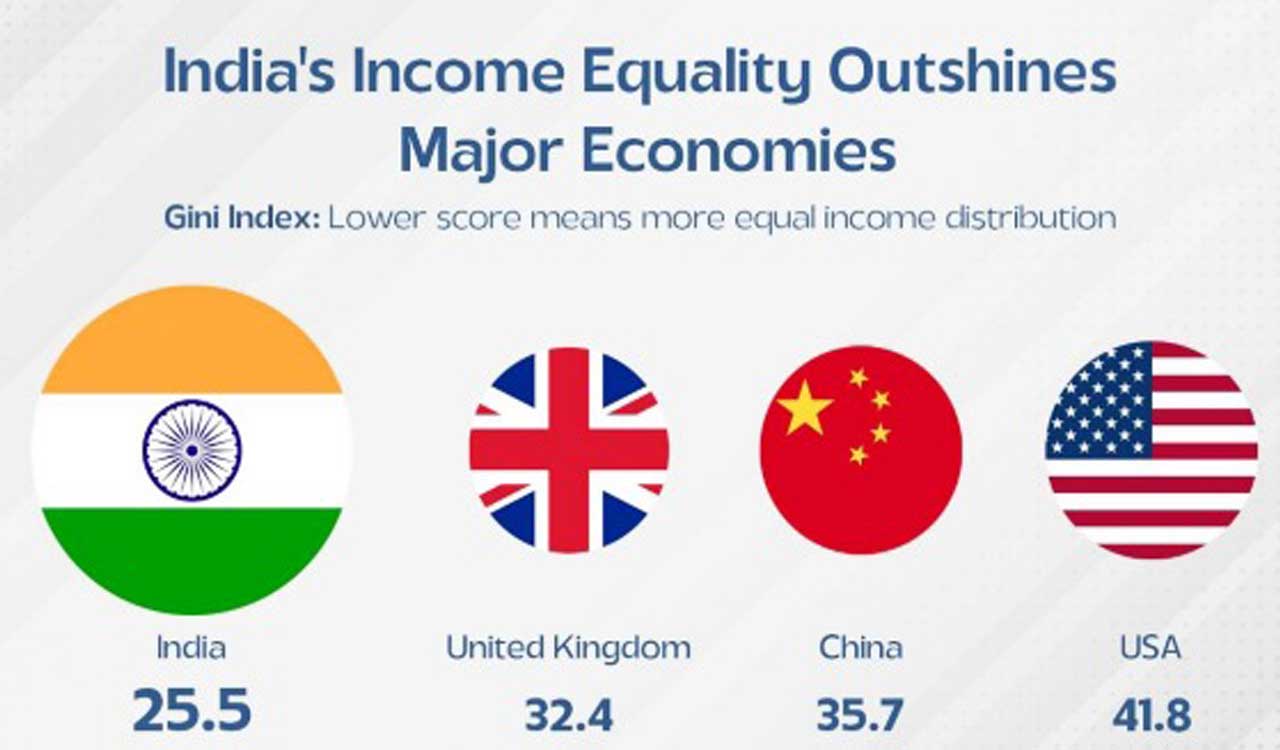India’s Emerging Equity Model

- 09 Jul 2025
In News:
According to the World Bank’s latest estimates, India has emerged as the fourth most income-equal country in the world, registering a Gini Index of 25.5 in 2022–23. This significant milestone places India just behind the Slovak Republic, Slovenia, and Belarus, surpassing many advanced and developing economies in income equality.
This achievement is paralleled by a sharp decline in extreme poverty—from 16.2% in 2011–12 to 2.3% in 2022–23—with over 171 million people lifted out of poverty in the past decade. It reflects the combined impact of sustained economic growth and the Indian state’s proactive welfare architecture.
Understanding the Gini Index and India’s Ranking
The Gini Index measures income inequality on a scale from 0 (perfect equality) to 100 (maximum inequality). With a score of 25.5, India falls into the "moderately low inequality" bracket (25–30), indicating a fair distribution of income. This is in sharp contrast to countries like China (35.7) and the United States (41.8). India's position is particularly noteworthy given its population size and diversity.
Poverty Reduction as a Catalyst for Equality
A key driver of this improved equality has been the drastic reduction in poverty, based on the World Bank’s threshold of $2.15/day (PPP). The decline to 2.3% extreme poverty signals successful poverty alleviation through targeted welfare, representing one of the most remarkable social transitions globally in the last decade.
Government Schemes and Inclusive Interventions
India’s equity gains are not accidental but the result of well-designed and executed social policies, supported by digital infrastructure and targeted delivery.
1. Financial Inclusion and DBT
- PM Jan Dhan Yojana enabled over 55 crore bank accounts, promoting financial access across rural and urban populations.
- Aadhaar-linked Direct Benefit Transfers (DBT) reduced leakages, saving ?3.48 lakh crore by March 2023.
2. Health Security: Ayushman Bharat provides ?5 lakh insurance coverage, with over 41 crore beneficiaries enhancing access to secondary and tertiary healthcare.
3. Food Security: PM Garib Kalyan Anna Yojana (PMGKAY) ensured food availability to 80 crore people during COVID-19 and beyond, securing nutrition and resilience.
4. Livelihood Support: Stand-Up India and PM Vishwakarma Yojana support entrepreneurship, skilling and credit access for SCs, STs, women, and traditional artisans.
A Model of Equity-Oriented Growth
India has demonstrated that inclusive digital governance, if integrated with fiscal discipline and political will, can lead to tangible socioeconomic transformation. The convergence of growth, inclusion, and resilience sets a strong foundation for social equity.
A Social Welfare Department official aptly noted, “The Gini Index of 25.5 reflects real change—better access to jobs, food, healthcare, and dignity.”
Global Context and India’s Unique Approach
Unlike Scandinavian countries that rely on entrenched welfare states, India’s equality model stems from scalable digital infrastructure, direct cash transfers, and community-centric schemes. Among 167 countries surveyed, India’s outcome stands as a beacon for other developing nations striving to achieve balanced and sustainable development.
